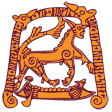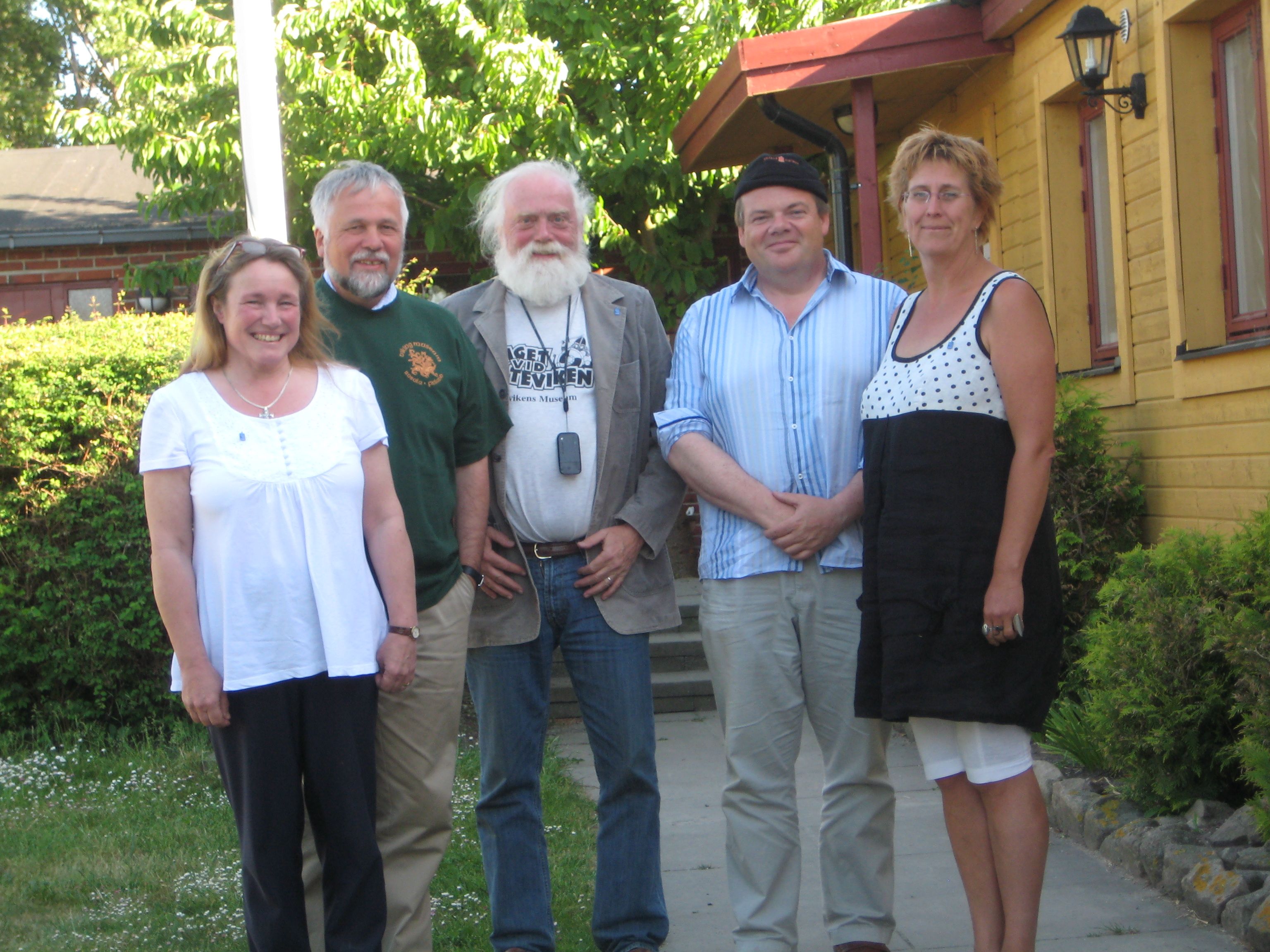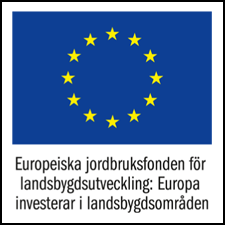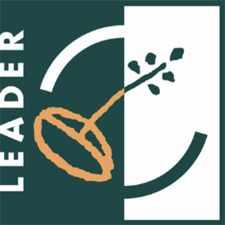DVA

Vikingavärlden 40 åriga historia
De togs sin start för mer än 40 år sedan och för drygt 30 år startade denna trojka Björn, Geir, Sven en resa i vikingatid som satte spår runt om i hela Europa.



Björn M Buttler Jakobsen med sina kreativa, ideer, kunskap. Med kunskap om media och hemsidesproduktion och sitt stora nätverk i de vikingatida kretsarna.
Sven Rosborn, musiemannen, skribenten , Arkeologen datanörden.
Eu experten Geir Sör Reime med sina visioner och kunskap om att sammanställa ansökningar med bra innehåll.
Experimnetell arkeologi, förmedling och levandegörande, hantverk och historisk kunskaputveckling.
Fotevikens första EU projekt - Öresund nu och då,
Vi på Fotevikens museum redan igång med vårt första EU projekt, Öresund nu och då, tillsammans med Roskilde museum i Danmark
1997 - 1999: Over Öresund, Interreg IIA project. The Museum of Foteviken – FMC, in cooperation with Roskilde Bymuseum, completed a project aimed at charting and building a searchable data base of events around Öresund from the Viking Age and the Middle Ages.
2003 ansökte stiftelsen Fotevikens maritima Centrum och museet om medel från Framtidens Kultur och erhöll sådana för en omfattande inventering av hela Sveriges bestånd av mera framträdande vikingatida fornlämningar: ”Det Svenska Kulturlandskapet”. Detta omfattande arbete resulterade bl.a. i databasen Vikingarnas landskap, fritt och tillgänglig för alla på nätet.
2004 ingick stiftelsen som konsulter i Öresundsprojektet ”Pileland – kultur och natur”. http://www.pilelandet.com/index_2.html
projektet ledes av Vellinge Kommun
Se DVA story In 2012, the responsibility for the Council of Europe’s Viking Route was transferred to the Destination Viking Association, and the association also had a successful re-accreditation by the Council of Europe in 2015. Mycket av detta arbetet lade Jimmy Moncrieff grunden till.

Parallellt med detta projekt blev stiftelsen och Vellinge kommun involverade i ett stort Nordsjöprojekt inom Interreg III B, Nave nortrail. Stiftelsens del blev att man här kunde rekonstruera ett utsikttorn, baserat på forskning kring vikingatida försvarstorn.
http://www.northseatrail.org/index.php/se/
Samtidigt fick Vellinge
Follow the Vikings
https://www.followthevikings.com/
Ett nytt Europeisk Destionation viking Eu projekt var givetvis ett måste. Med Geirs som motor i vad som måste till för att ett projekt skulle till. En fantastisk styrelse som gån på gång möttes inte minst i Bryssel för att spåna och utvewckla under Geir stränga – vad som gäller för succés.
CodeX , Viking vission kärt barn har många namn. Det tog ett par år med ett par misslyckande där vi saknade en poäng för att få igenom vårt projekt men så In 2015, the association applied successfully to EUs Creative Europe program for a four-year project called Follow the Vikings, with 15 full and 10 associate partners. The main objective of this project was to continue the route development started by the previous projects (North Sea Viking Legacy, Destination Viking Sagalands, Destination Viking Baltic Stories and the Thing Project) and to further public interest in the Viking heritage and the Viking Route.
One component of this project was a professional road show to be performed at 13 locations during 2017-18. The project also includes the production of a new graphic profile, a new and inter-active website combined with social media presenting the Viking route, a printed guide book and a series of graphic novels based on Viking stories.
The website guide and the printed guide book will incorporate the content of the four regional guide books produced by North Sea Viking Legacy and the three other projects (Sagalands, Baltic Stories, Thing), as well as content produced by the Viking Heritage organisation. Nu I ny form där Ben Baillie spelade en viktig roll och tog över Viking heritage magasin och gjorde det till DVA newsletter Hugin och mumin. Genom FTV kunde vi så åter utveckla detta och skapa en tidskrift i färg med snygg lay out.
The membership in the Association has shown a steady increase and is now around 60, several of which are key Viking attractions like the Jorvik Viking Centre in York, the British Museum and the L’Anse-aux-Meadows Viking site in Canada. Also members are the Swedish and Danish National Museums, in addition to a number of Viking villages around Europe.
2011 - 2011, Söderslätt museum network, a leader pilote project, to bring togeter the museums at Söderslätt.
2015-2019 FOLLOW THE VIKINGS Creativ Europe The Follow the Vikings project is a multi-faceted project to promote, celebrate, transfer knowledge and skills and facilitate the exchange of tangible and intangible cultural material relating to the Viking World. It presents a tremendous opportunity to add value to and build on the Council of Europe’s Viking Cultural Route,
Viking Vision
Viking Vision ett projekt som vi väntar svar på - det blev Follow the vikings 2015
DETTA STYCKE FINNS MED MEN SKALL ANPASAS TILL EUPROJEKTEN . DE finns uppdelat på organsiationer .
Destination Viking skall bli organisation
Det är också nu som det första försöket görs att organisera Destination viking projekten till en enhetlig europeisk organisation. Resan gick till Island of Mann. Med på resan var Dan Carlson, professor från Gotland som arbetat med Viking heritage projekt via högskolan på Gotland. Han var den som på 1980-talet initierade Viking Culture route i programkonceptet Europén culture routes och även stått bakom boken ”Follow the vikings”. I ressällskapet fanns också Rögnvaldur från ”Sagalands association”, vår holländske vän Jan Stoben och han som var med på försöket med ”Destination Viking water land” samt Steven Harrisson som då var Kultur och museichef på Isle of Mann. Den grundläggande idén som vi hade var att vi i stiftelse- eller bolagsform skulle driva ”Destination Viking association” som organisation för vikingatida verksamheter och besöksmål med basen på Isle of Mann. Försöket lyckades nästan.

Partners och andra influenser i utvecklingen
Under tiden med arbetet i alla dessa EU-projekt skapade vi olika partners men också värdefulla kontakter runt om i Europa. Här är några av dessa.
skall även kopplas till DVA utveckling
”Institutet för forntida teknik” 1980
An important event for the Swedish experimental archaeology was when the ”Institutet för forntida teknik” (Institute of ancient technique) with was founded in 1980 in Östersund in Sweden. The initiator and enthusiast behind the project was Thomas Johansson and the activity was integrated into the Bäckedal people's college. Under his leadership the institute was developed into the the leading Swedish institution within its subject area. The institute worked not only with archaeology but also related disciplines of science, like nature science, anthropology and older crafts.
NSLF- Nätverk Sveriges levande forntid 1999
On the 26th of October 1999 all representatives of all ancient villages and experimental archaeology in Sweden gathered in Ås. Thomas Johansson and Harriet Löwenheim thus initiated the creation of the organisation Nätverket Sveriges Levande Forntid (NSLF).
Föreningen NSLF bildades och utvecklades på ett ytterst kreativt och framgångsrikt sätt. Nätverket gjorde hela Sverige starkare när det gällde att verka för levande historia. Både kvalitet och ämneskunskap ökade men tyvärr dog en av eldsjälarna, Thomas Johansson, sommaren 2003. Institutet under hans ledning var då en av parterna i ”Sagalandsprojektet”. ”Gene forntidsby” i Örnsköldsvik i Sverige med Agne och Maria Säterberg fick då ta över partnerskapet i Destination Viking Saga Land 2003-2006 samtidigt somordföranderollen i föreningen NSLF togs över av Björn. A lot of work was put into increasing quality and knowledge among the roughly 40 members of the organisation. Många av dessa medlemmar blev också partner i de två nästkommande EU projekten på temat vikingar.
NOOAM - the Nordic Organisation of Open Air Museums 2007
In 2007 another step was taken toward a broader approach with the remake of the association organisation Nätverket Sveriges Levande Forntid (NSLF), into the Nordic Organisation of Open Air Museums, NOOAM. www.nooam.se
Destination Viking Associations
En interimstyrelse till denna organisation bildades 25.3 2007 under en långfärd buss med olika nordiska representanter. Det hela skedde efter ett årsmöte där organisationen NSLF hade övergått till den nya organisationen NOOAM. På väg hem till Foteviken blev vi i en fullsatt minibuss plötsligt väldigt kreativa och bildade då föreningen Destination Viking Association. I interimstyrelsen invaldes deltagarna i bussen, nämligen Geir Sör Reime, som valdes som interimstyrelse ordförande, Björn M Buttler Jakobsen som vice interim chariman, Mikael Härdig som interim sekreterare Helga Agustdottir från Island Sagaland som interim kassör. Till övriga interimsledamöter valdes enhälligt övriga i vikingatiden erfarna bussresenärer: Sven Rosborn och Susanne Buttler, båda från Fotevikens Museum samt Igrun Ragnarsdottier från Island.
På våren 2008 hölls ett nätverksmöte för NOOAM på ”Gunne gård” i Stockholm, Sverige. På mötet fanns representanter för hela Skandinavien. Vid detta tillfälle godkändes stadgarna för Destionation viking Associations och verksamheten drog i gång.
In November 2008, the Destination Viking Association was formed in Haugesund Norway. It has formally taken over the results and products of the three Viking projects. In parallel with this, an Interreg IVC Northern Periphery project called THING Project was approved, and upon its completion, the Destination Viking Association took over the results and products of this project too.
Jimmy Moncrieff ordförande
Björn M Buttler Jakobsen, vice ordförande
Paula Wilson, sekreterare,
Gun Bjursberg, kassör
Rögnvaldur Gudmusson, ledamot
Geir Sör Reime, ledamot.
Professor Dan Carlsson blev hedersledamot.
Så var vi då igång. Valet av Jimmy Moncrieff var en viktig länk i DVAs framtida succés. Det viktigt med Shetland Amenity Trust i ryggen skulle vi få en person som ordförande med rätta ekonomiska möjligheter och muskler att stå bakom organisationen. Då skulle vi också ha en del av finansieringen på plats.
På ett möte På Fotevikens Museum den 9 juni 2008 på ett styrelsemöte med Björn Geir , Paula, Geir och Jimmy var så Organsiationen i full sving
Nu hoppades vi att vi hade de muskler och resurser som behövdes för att sätta DVA på kartan.
O vi utvecklades. Allt fler organisationer slöt upp bakom DVA och det blev allt mer spännande att titta in i framtiden.
Under den period när det svenska nätverket Nätverket Sveriges Levande Forntid (NSLF),hade startat initierade Tomas Johansson även bildandet av EXARC 2001, en europeisk motsvarighet till det svenska nätverket. At the founding of the Swedish network the goal was to develop the Swedish concept into an international concept. Thomas Johansson had this thought when he established a close collaboration with Martin Schmidt who was then head of the classic "Archäologisches Freilichtmuseum” in Oerlinghausen, Germany, and the Dutch archaeology student Roeland Paardekooper. När detta nätverk så gick in i föreningsform efter ett möte i Lejre I Danmark våren 2003 blev Björn här invald som vice ordförande och när sedan Thomas tragiskt gått bort endast en kort tid därefter fick Björn ta över ordförandeposten vid årsmöte i Foteviken 2005. Det var under mötet i Lejre som Björn också presenterat möjligheten för EU projekt för fortsatt utveckling av EXARC. Härigenom skulle vi kunde arbeta vidare med kvalitetsutveckling av inte bara vikingaanläggningar utan även med anläggningar runt omkring i Europa som visade andra tidsepoker. I detta arbete skulle frågor rörande förmedling och experimentell arkeologi spela en stor roll. På Björns förslag invaldes Geir Sör Reime med sitt stora internationella kontaktnät i EXARCS styrelse.
Till EXARC parallella EU projekt
Utom engagemanget i EXARC arbetade Geir och Björn med andra närstående projekt. Många organisationer och grupper ville nämligen ha deras erfarenheter med sig i sina projekt. Detta resulterade i bland annat två stora och mycket framgångsrika EU projekt, LiveArch 2006 – 2009 och OpenArch 2011-2015. Flera av Destination Viking Associations ursprungsmedlemmar (men många nya) kom med i detta arbete.
Engelska texter som vi senar gör en engel sida på
It all started with two people – two projects in the year 1999
As I remember it, it began during the spring of 1999 with an e-mail from Geir Sör Reime from Stavanger in Norway, working for the Rogaland county municipality. Nice, I thought, my own background being from Stavanger in Norway, so I responded immediately. At the time Geir was running a newly started EU project for the Rogaland county municipality, North Sea Viking Legacy, and he wished to have a collaboration between our countries.
The North Sea Viking Legacy project was approved by the Interreg IIC North Sea program in January 1999, including 20 partners from Norway, Denmark, Sweden and the United Kingdom (Shetland and Norfolk), with associate partners from the Isle of Man, Iceland and southern Sweden.
At the project meetings Avaldsnes on Karmøy also showed up for the first time. Additional project participants included Marit Synnøve Vea and Rögnvaldur Gudmundsson from Iceland, Jan Lindh from Midgard in Borre/Tönsberg and Bjarne Clements from Ribe Viking Centre in Denmark.
At the time the Foteviken Viking Museum were already involved in our first EU project 1998-1999, Öresund now and then, in collaboration with the Roskilde Museum in Denmark.
We, Geir and Björn decided to meet up, which was done following an EU conference in Finland.
At the same time, Vellinge municipality and Foteviken Viking Museum partnered in up the EU project Balder, an Interreg IIC Baltic Sea project, which ran from 2000 to 2003.
This project was about the countries surrounding the Baltic Sea and their history from the Viking Age to the present day. Geir Sör Reime became an observer in this project, like I had become an observer in the North Sea Viking Legacy (NSVL) project. The project concerned informational signs posted in nature as an important way of imparting information about the sites. The project also created hiking trails to visualise the historical cultural landscape.
Dan Carlsson, professor at the University College of Gotland, was running Viking Heritage, which was in charge of managing the Council of Europe's Viking route, and in the coming time our projects would work together, and we developed their newsletter into the Viking Heritage Magazine.
The main focus of the collaboration between the projects and the university college was to improve public access, both physically and mental, to the Viking heritage (measure 3.3 in the program – promotion of cultural tourism). The project improved signs at more than 50 sites, produced a number of leaflets and guides, along with a book describing a number of important Viking sites around the North Sea.
All the Destination Viking projects used the Viking Heritage Magazine as their newsletter.
In 2012, the responsibility for managing the Council of Europe's Viking Route was transferred to the Destination Viking Association, and the association later had a successful re-accreditation by the Council of Europe in 2015. Jimmy Moncrieff laid the foundation for much of this work.


